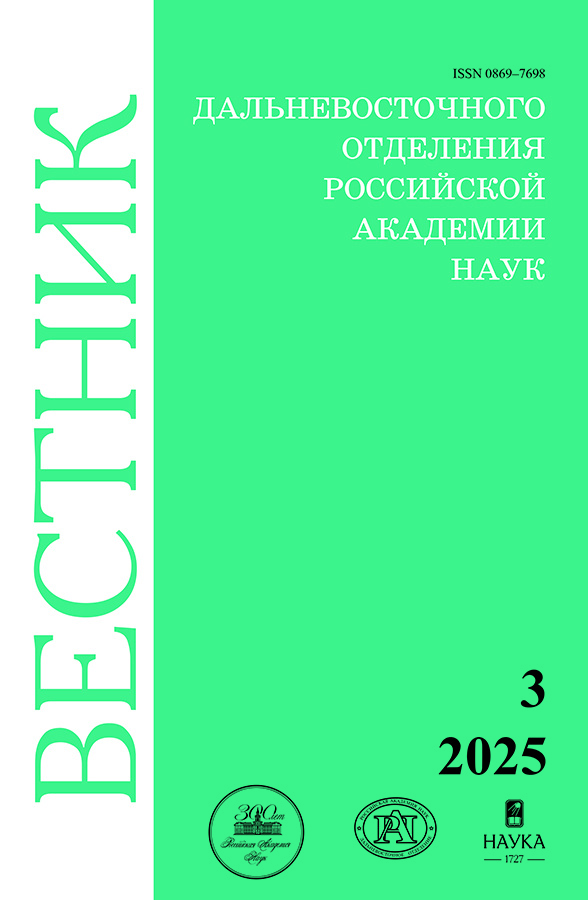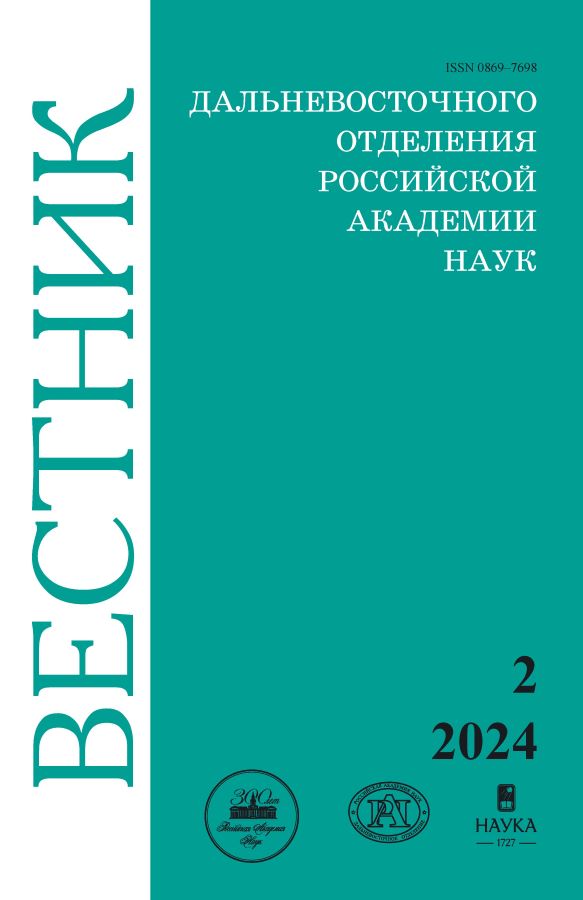Significance of antibody detection to individual B-epitopes of envelope proteins of hepatitis C virus
- Authors: Stuchinskaya M.D.1,2, Nikolaeva L.I.2, Shevchenko N.G.2, Sapronov G.V.2,3, Shastina N.S.1
-
Affiliations:
- MIREA - Russian Technology University
- N. F. Gamaleya National Research Center for Epidemiology and Microbiology
- Russian Medical Academy of Continuing Professional Education
- Issue: No 2 (2024)
- Pages: 70-79
- Section: Biological Sciences
- URL: https://permmedjournal.ru/0869-7698/article/view/676048
- DOI: https://doi.org/10.31857/S0869769824020074
- EDN: https://elibrary.ru/ldifvh
- ID: 676048
Cite item
Full Text
Abstract
Hepatitis C virus (HCV) is hepatotropic viruses, causing chronic infection, which can lead to liver failure, cirrhosis, and hepatocellular carcinoma. The two viral envelope glycoproteins E1 and E2 mediate the virus entry into host cells, and they are the targets of virus-neutralizing antibodies, which play an important role in limiting infection. The aim of the study was to analyze infected human antibody response to peptides reproducing B-cell epitopes of HCV envelope proteins to assess their possible association with virus elimination. The synthesis of three peptides from envelope proteins was carried out by the solid phase method. The immunoreactivity of the peptides was studied with blood sera from 63 participants with viral hepatitis C. The amino acid sequences of the peptides corresponded to region 244–259 and 313–324 of the E1 protein and 395–411 of the E2 protein. Peptide immunoreactivity was assessed by enzyme-linked immunosorbent assay (ELISA) using blood sera of 63 participants with acute and chronic hepatitis C. According to the results of ELISA, it was found that antibodies were detected in 55,6% (sampling error 6,3%) of participants. If the presence of an antibody titer was 1:80 or higher to the analyzed peptides, then the most participants completed therapy with a sustained virological response or acute hepatitis with the virus elimination. That may indicate the potential significance of the presence of antibodies to B-cell epitopes of HCV envelope proteins in this titer of high for a positive outcome of acute hepatitis C and therapy with direct antiviral drugs.
Full Text
About the authors
Maya D. Stuchinskaya
MIREA - Russian Technology University; N. F. Gamaleya National Research Center for Epidemiology and Microbiology
Author for correspondence.
Email: mayastaya@mail.ru
ORCID iD: 0000-0001-8544-7482
Graduate Student; Junior Researcher
Russian Federation, Moscow; MoscowLyudmila I. Nikolaeva
N. F. Gamaleya National Research Center for Epidemiology and Microbiology
Email: l.i.nikolaeva@mail.ru
ORCID iD: 0000-0002-1323-5568
Doctor of Sciences in Biology, Leading Researcher
Russian Federation, MoscowNadezhda G. Shevchenko
N. F. Gamaleya National Research Center for Epidemiology and Microbiology
Email: dr.nadya@inbox.ru
ORCID iD: 0000-0002-2486-4554
Junior Researcher
Russian Federation, MoscowGeorgy V. Sapronov
N. F. Gamaleya National Research Center for Epidemiology and Microbiology; Russian Medical Academy of Continuing Professional Education
Email: g-sapronov@mail.ru
ORCID iD: 0000-0002-2154-2904
Candidate of Sciences in Medicine, Senior Researcher; Associate Professor
Russian Federation, Moscow; MoscowNatalya S. Shastina
MIREA - Russian Technology University
Email: inosit@yandex.ru
ORCID iD: 0000-0001-8382-7262
Candidate of Sciences in Chemistry, Associate Professor
Russian Federation, MoscowReferences
- World Health Organization. Global Hepatitis Report, 2017 / World Health Organization. Geneva, Switzerland; 2017. 83 p. URL: https://www.who.int/hepatitis/publications/global-hepatitis-report2017/en/ (accessed on 20.03.2023).
- Wang R., Suzuki S., et al. Induction of broadly neutralizing antibodies using a secreted form of the hepatitis C virus E1, E2 heterodimer as a vaccine candidate. Proceedings of the National Academy of Sciences. 2022;119(11).
- Colpitts C. C., Tsai P. L., Zeisel M. B. Hepatitis C virus entry: An intriguingly complex and highly regulated process. International Journal of Molecular Sciences. 2020; 21(6):2091.
- Sepulveda-Crespo D., Resino S., Martinez I. Hepatitis C virus vaccine design: focus on the humoral immune response. Journal of Biomedical Science. 2020;27:78.
- Raghuraman S., Park H., Osburn W. O., Winkelstein E., Edlin B. R., Rehermann B. Spontaneous clearance of chronic hepatitis C virus infection is associated with appearance of neutralizing antibodies and reversal of T-cell exhaustion. The Journal of Infectious Diseases. 2012;205(5):763–771.
- Pestka J. M., Zeisel M. B., Bläser E. et al. Rapid induction of virus-neutralizing antibodies and viral clearance in a single-source outbreak of hepatitis C. Proceedings of the National Academy of Sciences of the United States of America. 2007;104(14):6025–6030.
- Quadeer A. A., Louie R. H.Y., McKay M. R. Identifying immunologically-vulnerable regions of the HCV E2 glycoprotein and broadly neutralizing antibodies that target them. Nature Communications. 2019;10(1):2073.
- Cocquerel L., Meunier J. C., Op de Beeck A., Bonte D., Wychowski C., Dubuisson J. Coexpression of hepatitis C virus envelope proteins E1 and E2 in cis improves the stability of membrane insertion of E2. The Journal of General Virology. 2001;82(7):1629–1635.
- Keck Z. Y., Sung V. M., Perkins S. et al. Human monoclonal antibody to hepatitis C virus E1 glycoprotein that blocks virus attachment and viral infectivity. Journal of Virology. 2004;78(13):7257–7263.
- Mesalam A. A., Desombere I., Farhoudi A. et al. Development and characterization of a human monoclonal antibody targeting the N-terminal region of hepatitis C virus envelope glycoprotein E1. Virology. 2018;514:30–41.
- Tzarum N., Wilson I. A., Law M. The neutralizing face of hepatitis C virus E2 envelope glycoprotein. Frontiers in Immunology. 2018;9:1315.
- Farci P., Shimoda A., Wong D. et al. Prevention of hepatitis C virus infection in chimpanzees by hyperimmune serum against the hypervariable region 1 of the envelope 2 protein. Proceedings of the National Academy of Sciences of the United States of America. 1996;93(26):15394–15399.
- Nikolaeva L. I., Petrova E. V., Finogenova M. P. Antibodies to envelope proteins E1 and E2 in people infected with hepatitis C virus. Epidemiology and Vaccinal Prevention. 2006;1(26):37–41. (In Russ.).
- Sobolev B. N., Poroikov V. V., Olenina L. V., Kolesanova E. F., Archakov A. I. Comparative analysis of amino acid sequences from envelope proteins isolated from different hepatitis C virus variants: possible role of conservative and variable regions. Journal of Viral Hepatitis. 2000;7(5):368–374.
- Zibert A., Kraas W., Ross R. S. et al. Immunodominant B-cell domains of hepatitis C virus envelope proteins E1 and E2 identified during early and late time points of infection. Journal of Hepatology. 1999;30(2):177–184.
- Garcia J. E., Puentes A., Súarez J. et al. Hepatitis C virus (HCV) E1 and E2 protein regions that specifically bind to HepG2 cells. Journal of Hepatology. 2002;36(2):254–262.
- Garry R. F., Dash S. Proteomics computational analyses suggest that hepatitis C virus E1 and pestivirus E2 envelope glycoproteins are truncated class II fusion proteins. Virology. 2003;307(2):255–265.
- Giang E., Dorner M., Prentoe J. C. et al. Human broadly neutralizing antibodies to the envelope glycoprotein complex of hepatitis C virus. Proceedings of the National Academy of Sciences of the United States of America. 2012;109(16):6205–6210.
- Owsianka A., Clayton R. F., Loomis-Price L.D., McKeating J.A., Patel A. H. Functional analysis of hepatitis C virus E2 glycoproteins and virus-like particles reveals structural dissimilarities between different forms of E2. Journal of General Virology. 2001;82(pt. 8):1877–1883.
Supplementary files








